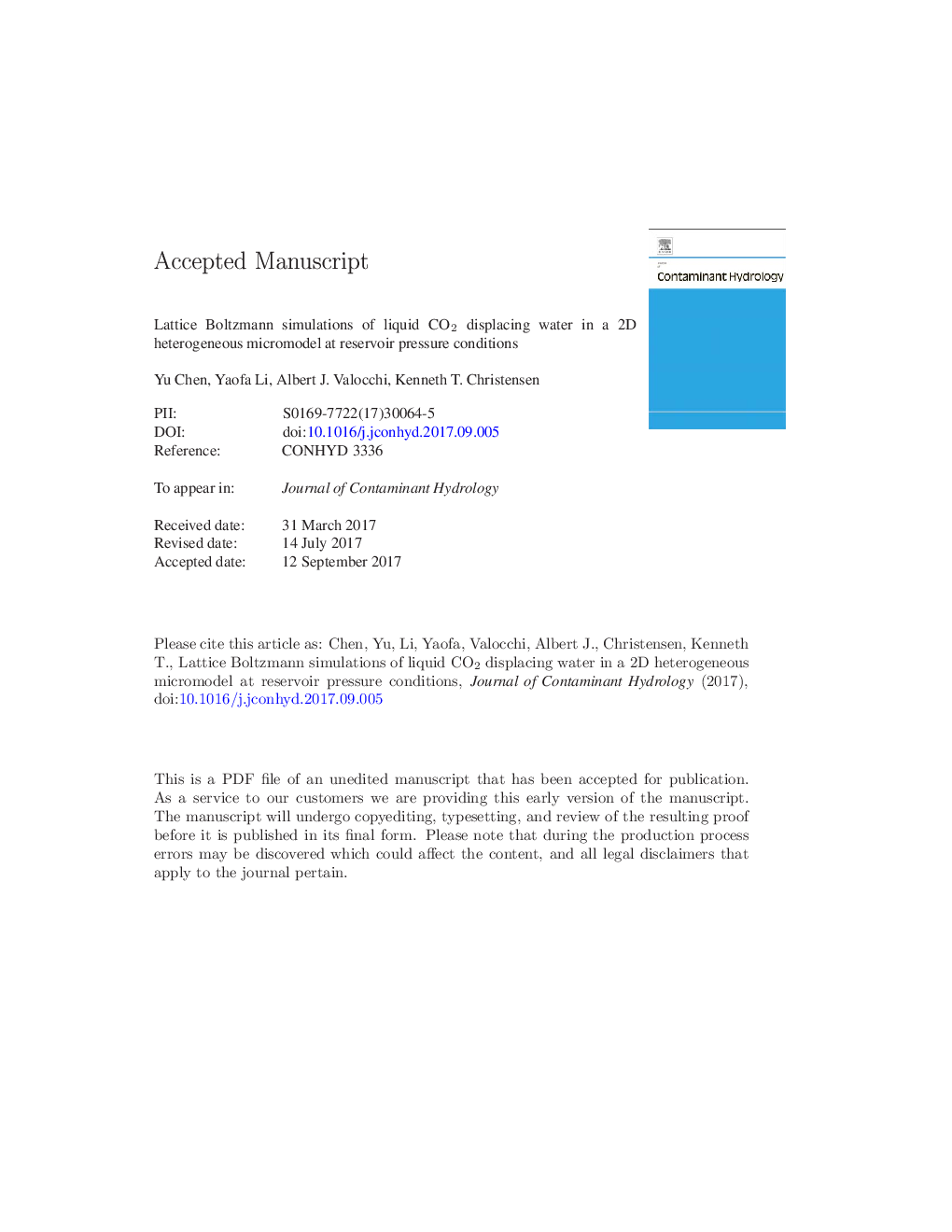| Article ID | Journal | Published Year | Pages | File Type |
|---|---|---|---|---|
| 8885808 | Journal of Contaminant Hydrology | 2018 | 48 Pages |
Abstract
We employed the color-fluid lattice Boltzmann multiphase model to simulate liquid CO2 displacing water documented in experiments in a 2D heterogeneous micromodel at reservoir pressure conditions. The main purpose is to investigate whether lattice Boltzmann simulation can reproduce the CO2 invasion patterns observed in these experiments for a range of capillary numbers. Although the viscosity ratio used in the simulation matches the experimental conditions, the viscosity of the fluids in the simulation is higher than that of the actual fluids used in the experiments. Doing so is required to enhance numerical stability, and is a common strategy employed in the literature when using the lattice Boltzmann method to simulate CO2 displacing water. The simulations reproduce qualitatively similar trends of changes in invasion patterns as the capillary number is increased. However, the development of secondary CO2 pathways, a key feature of the invasion patterns in the simulations and experiments, is found to occur at a much higher capillary number in the simulations compared with the experiments. Additional numerical simulations were conducted to investigate the effect of the absolute value of viscosity on the invasion patterns while maintaining the viscosity ratio and capillary number fixed. These results indicate that the use of a high viscosity (which significantly reduces the inertial effect in the simulations) suppresses the development of secondary CO2 pathways, leading to a different fluid distribution compared with corresponding experiments at the same capillary number. Therefore, inertial effects are not negligible in drainage process with liquid CO2 and water despite the low Reynolds number based on the average velocity, as the local velocity can be much higher due to Haines jump events. These higher velocities, coupled with the low viscosity of CO2, further amplifies the inertial effect. Therefore, we conclude that caution should be taken when using proxy fluids that only rely on the capillary number and viscosity ratio in both experiment and simulation.
Related Topics
Physical Sciences and Engineering
Earth and Planetary Sciences
Earth-Surface Processes
Authors
Yu Chen, Yaofa Li, Albert J. Valocchi, Kenneth T. Christensen,
